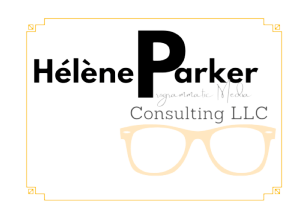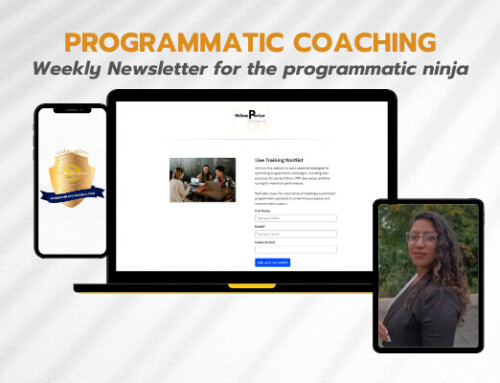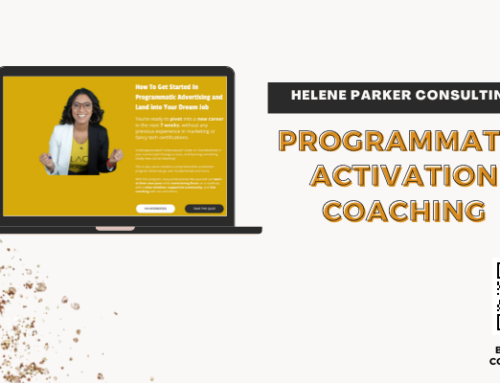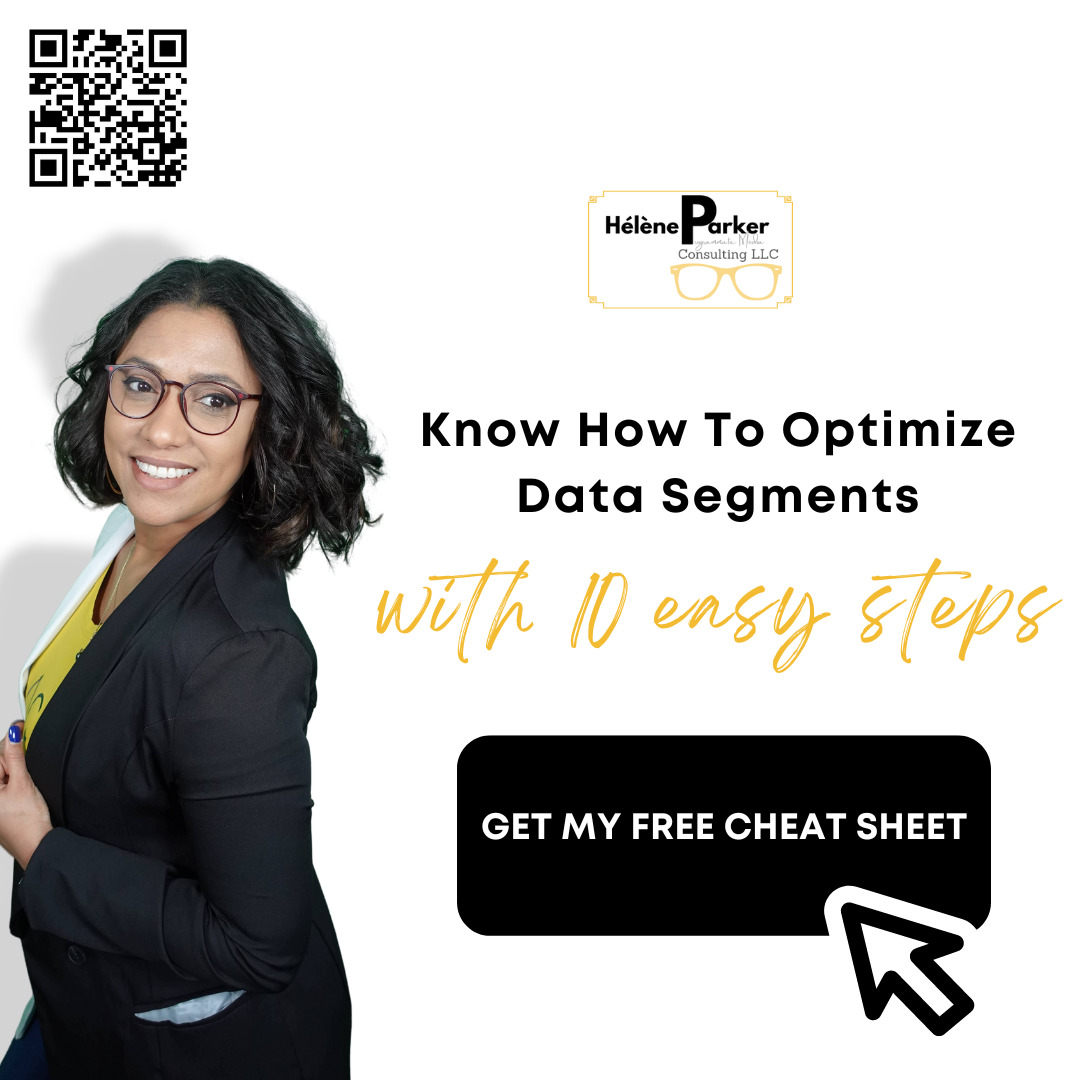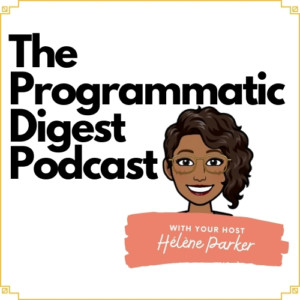Tip Of The Week for Programmatic Ninjas: Three Easy Ways To Organize your Yearly Report
Hi there,
Announcement Of The Week:
We did an optimization session live on LinkedIn and YouTube a couple of weeks ago regarding optimizing data segments and the best practices to do so efficiently.
You can catch the Replay here or download the Cheat Sheet Guide here where in I summarized it in 10 easy steps (perfect to pin on your desktop for easy access during your optimization sessions)
🔥🔥🔥🔥 Hot Candidates:
Two amazing programmatic media traders just graduated the Reach & Frequency Summer Program ready to be placed into their dream jobs. They are both looking for remote opportunities and have completed training on fundamentals to how to optimize a campaign and have been doing demo assignment in the Trade Desk. Feel free to give me a call 757-613-9984 or email me at info@heleneparker.com
Tip Of The Week for Programmatic Ninjas:
Brace yourself! Q4 is upon us; this is not the time to slow down. A few clients I have been offering workshops to in the last months have specifically requested to add a session where we cover reporting hacks and how to present the data to a client. Please note that it goes beyond the aesthetics of the decks, but we are talking about the content!
Here are three ways to organize your yearly report into a manageable and comprehensible presentation. Focus on these 3:
- What Worked
- What Did Not Worked
- Recommendation
I would also like to gently remind you that last month, we published this article regarding reporting hacks and suggested the following:
- What happened: Talk about a particular data point based on objective and KPI
- So what: Why did this happen? Any optimization or seasonal/industry influenced?
- Now What: Now that we know what happened and why what will we do about it? Now lay out the next steps.
The “What, So what, Now What” questions are still relevant for each of the “what worked, what didn’t, and recommendation” sections we will cover in this article.
This is with the assumption that you’ve been reporting monthly or weekly, so your client is already familiar with the ongoing performance analysis. Let’s also get this out of the way and confirm that every report should include a slide where the overall objective and main KPIs are recapped for the client. In that slide, it is vital to highlight the outstanding performance metric, whether good or bad or work in progress.
I. Let’s discuss what to include in your “✅ What Worked.”
This is not the time to be shy! This part of the report discusses the top 3-5 things that worked in favor of our goal. These are optimizations we’ve completed that lead to a higher conversion rate.
Who are your top performers: These campaign levers recorded the highest conversion count at the most efficient cost.
I.e.:
The in-Market First Time Home Buyers data segment has generated 25% of all conversions and averaged a cost per “visit this home” form of $87 per lead submitted.
Why should we care? We have now implemented a strategy where we focused on Home buyers with unique creative messaging and a specific retargeting plan re-engaging with these prospects at x frequency and with x message.
By testing this home buyer strategy, we can identify unique opportunities that are most cost-efficient for our ad dollar.
For an awareness-based campaign, 8,155,959 impressions were served, with over 65% delivered in the Detroit market. This audience has engaged the most with the sweet potato pie creative message A instead of pumpkin pie B, which leads us to conclude that this market is more likely to consume sweet potato products, including our brand x.
We’ve added additional tracking parameters to help us understand how our audience interacts on the website in addition to Google Analytics reporting. This will also allow us to add retargeting strategies in the future based on optimized goals.
II. Let’s discuss what to include in your “❗️ What Did Not Work.”
In this part of your yearly report, think of 2-3 things we’ve tested that did not work. Unlike the previous section, we are pointing out tactics that have underperformed despite our projections or tactics that should’ve performed well but missed the mark.
This is the opportunity to be fully transparent about the things that did not work, such as:
- Highlight underperforming partners or vendors.
- Review inventory or strategies implemented that have cost us more than we have estimated.
This is an integral part of your yearly report as it will set a tone where clients can rely on and trust us for our transparency. It is about what went wrong, but most importantly, the lesson learned on the journey.
Here are some examples:
The average OTT CPM was above $65 when we aimed to be below $40. Mainly, we’ve recorded higher costs with partner x on inventory under the x category. Although this is a prime category for our prospect audience, we’ve adjusted the OTT audience to focus on x inventory, broadening our targeting to remain efficient in our cost and continue to generate incremental reach. We’ve included said category in our display strategy to complement OTT efforts.
III. Let’s discuss what to include in your “💡Recommendation.”
This is a recommendation that was pulled from your yearly analysis. This is an excellent opportunity to bring the successes from what worked and the lessons from what didn’t and bridge them into a new recommendation.
Are we missing an opportunity to include DOOH?
How often are we updating creative messaging, and how many sets?
Can we invest in omnichannel measurement where we can concisely use 1st party data?
Have we considered an ID solutions partnership? (we are still in a pre-cookie deprecation era, and now is the time to test replacement options)
How do we prove that our upper funnel channels, such as OTT and audio, are essential in our consumer sale funnel?
Have we requested the client’s revenue to track and measure Return On Ad Spend?
Have we included captions and or QR codes in our OTT videos?
Should we request direct deals from SpotX or NBCU?
This part is an opportunity to upsell the client with a new strategy that will require an additional budget with a new creative message. This is an opportunity to showcase your expertise for your client’s brand by thinking outside the box and offering other targeting capabilities.
In summary, conducting a year-long report should be presented differently than your monthly or weekly report. This is an opportunity to give our clients the insights they will want to remember: What worked, what didn’t, and what we recommend to maximize their ad spend.
Keep it clear and concise! As mentioned above, organize it into three categories and remain transparent in your reporting.
Are you looking for help to standardize how you activate programmatic media as a team, including reporting and media planning? Let’s see how we can assist with a free consultation call! We offer Programmatic Activation workshops covering how your team can become efficient in their day-to-day activities by identifying opportunities to learn, standardize, and automate.
Let’s see how we can assist with a free consultation call!

Cheers to leveling up!
Hélène
Your Programmatic Coach
_______________________________________________________________________________________________________________________________
About Helene Parker Consulting LLC, we offer programmatic media activation training and workshops. Here are some example of training topics you could offer your team!
Our mission is to help 1,000 individuals with little to no experience in marketing to become programmatic media traders and planner with The Reach and Frequency™ course (share with a friend or co-worker and offer them 20% off any product with code newsletter20).
We are always looking for a referral or simply happy to chat the latest and greatest so don’t hesitate to book a call 😬
_______________________________________________________________________________________________________________________________
?utm_source=linkedin&utm_medium=newsletter&utm_campaign=heleneparker&utm_content=programmaticmediacoaching
?utm_source=linkedin&utm_medium=post&utm_campaign=heleneparker
